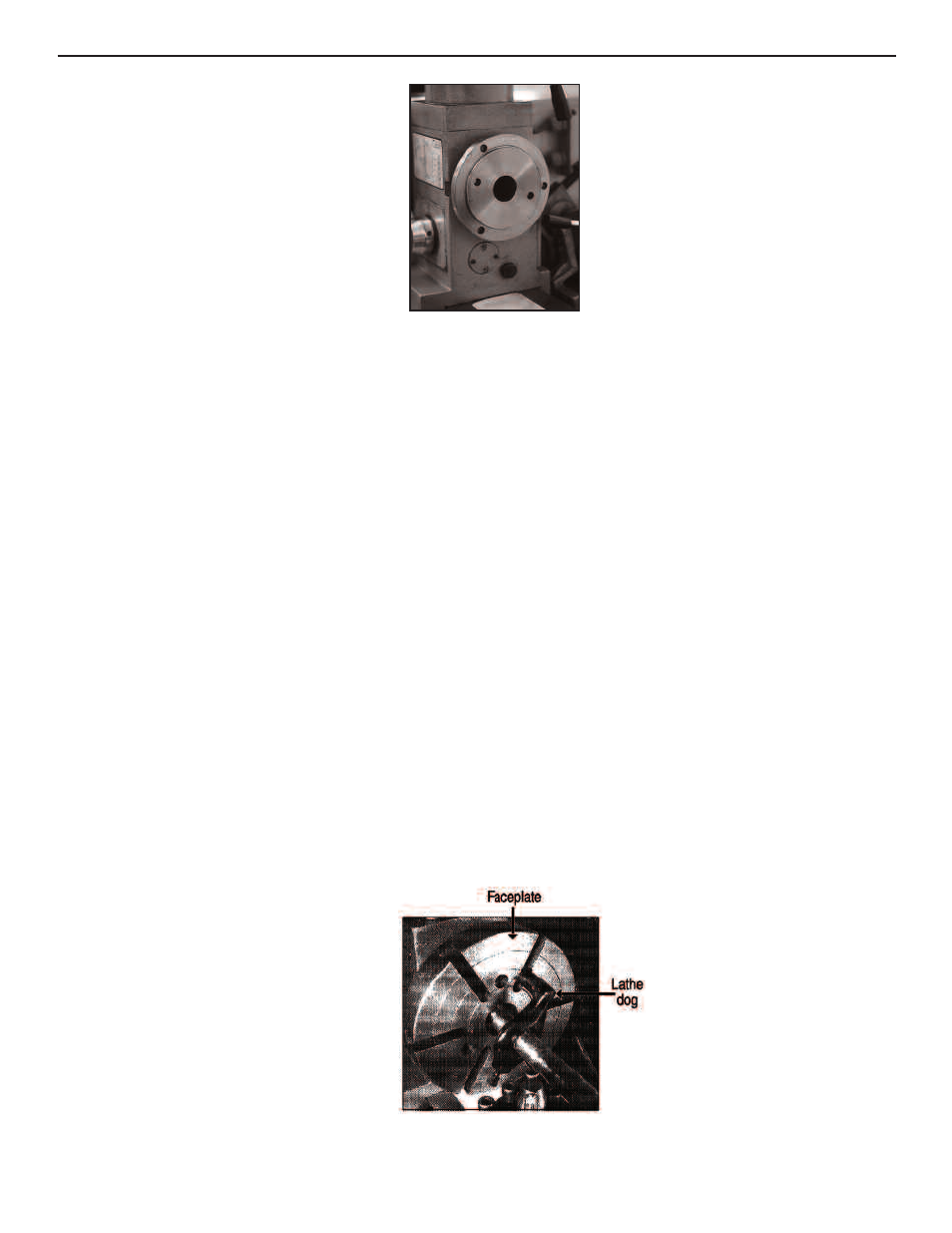Using a clamp dog, Using faceplates – Smithy Midas 1220 LTD User Manual
Page 47

Figure 10.8 Bolt the faceplate to the spindle flange
Using a Clamp Dog
Standard lathe dogs drive round, or near-round, shapes. Rectangular or near-rectangular
stock requires clamp dogs. In a properly made clamp dog, the under face of the heads
of tightening screws are convex and fit into concave seats, while the holes in the upper
bar are elongated. This design allows a firm grip of off-square shapes without bending
the screws. Top and bottom bars should also have V-notches to give a firm grip on
triangular or other odd-shaped stock. You can use clamp dogs or special V-jaw dogs also
to hold highly polished round bars.
Using Faceplates
For work setup, faceplates serve two purposes. First, they drive workpieces held between
centers. Second, they hold workpieces shaped so you can't chuck them or mount them
on centers.
Faceplates for driving workpieces on centers are generally small. They're notched and
slotted to receive the tail of the lathe or clamp dog, bolt drive, or other driving tool
(Figure10.9). Faceplates for holding workpieces (irregularly shaped casting, machine, or
die parts, for example) are usually larger and have varied designs. They may be
T-slotted, drilled all over, or slotted and drilled. Workpieces mount on such faceplates with
T-slot or standard bolts, strap clamps, angle plates, or other standard setup tools.
Figure 10.9 Fasten a lathe dog to one end of the work piece.
10: Setting Up with Centers, Collets, and Chucks
10-4
Or Visit www.smithy.com
